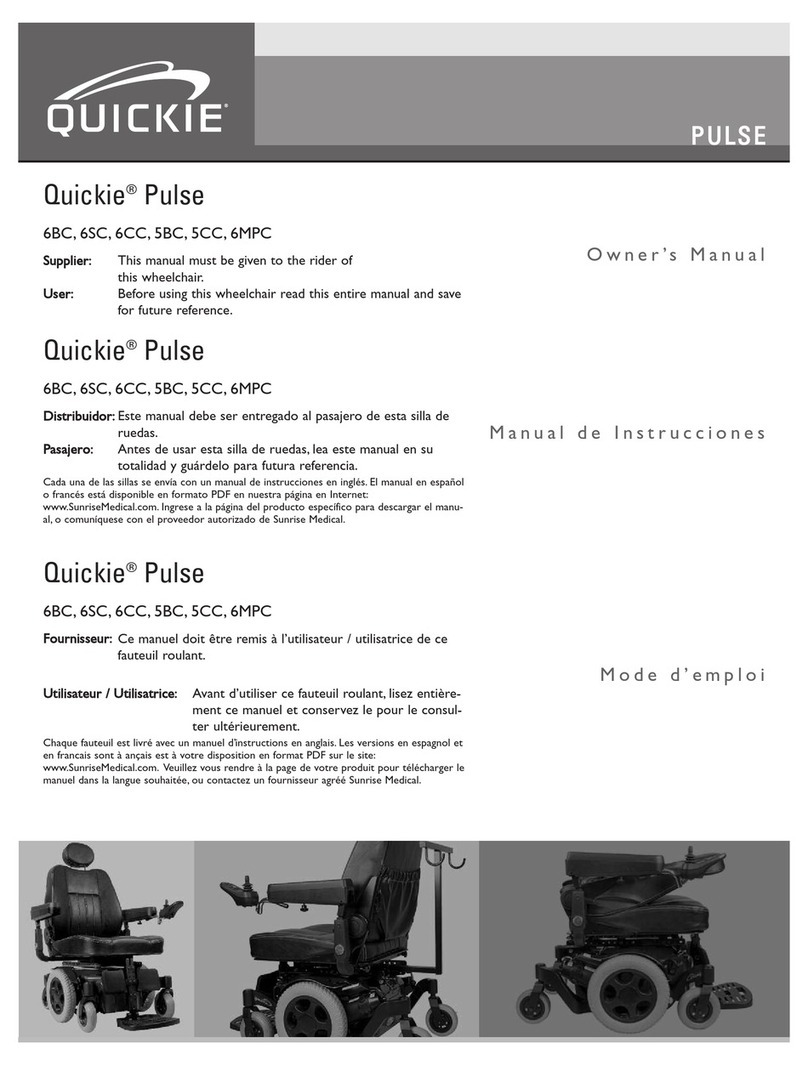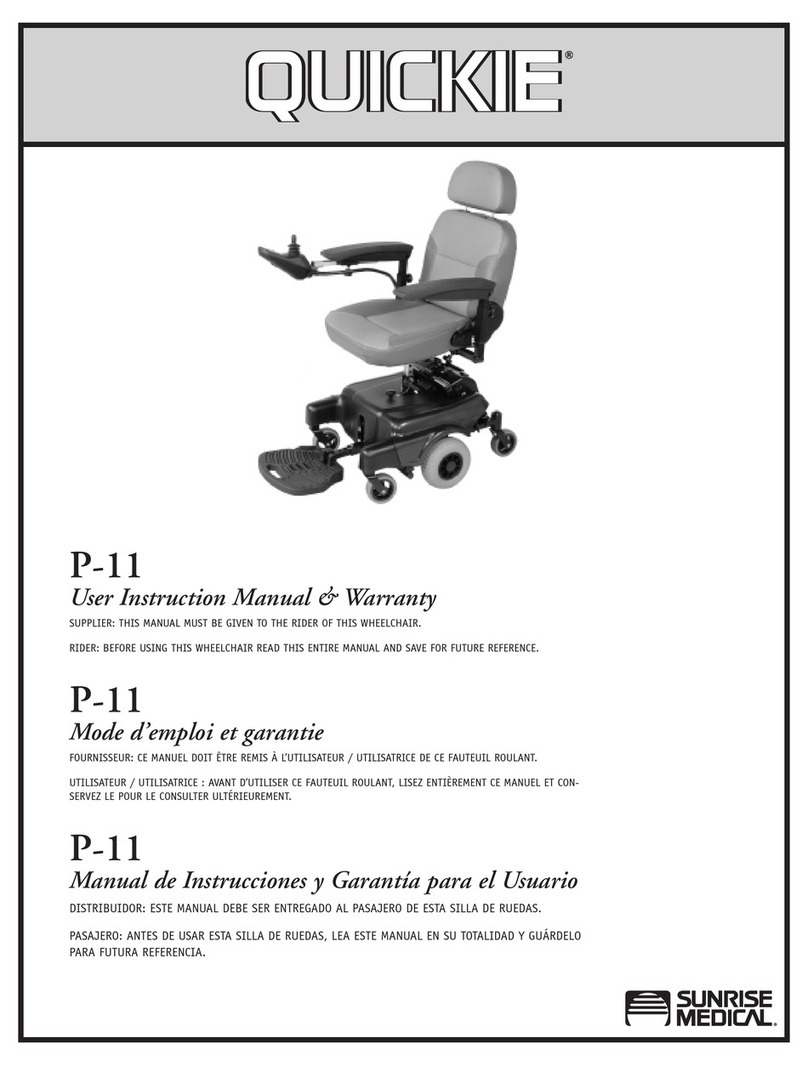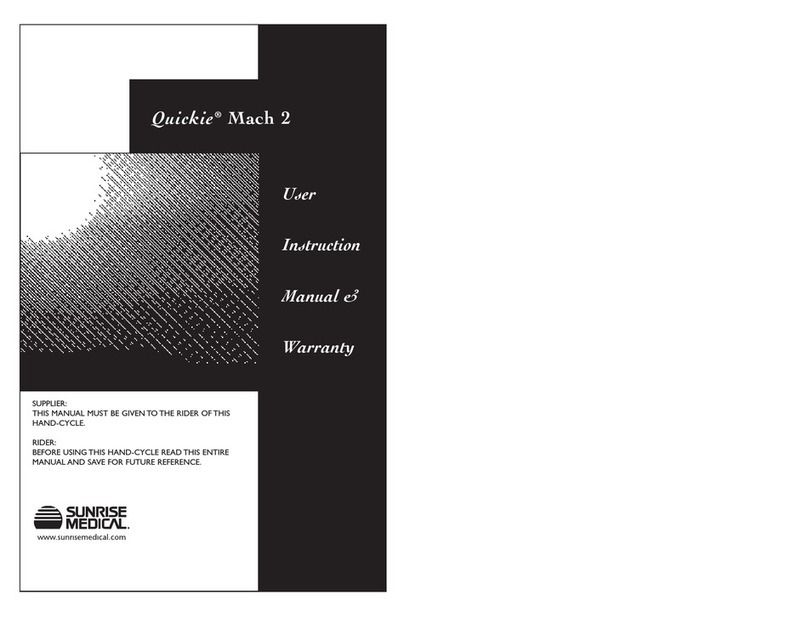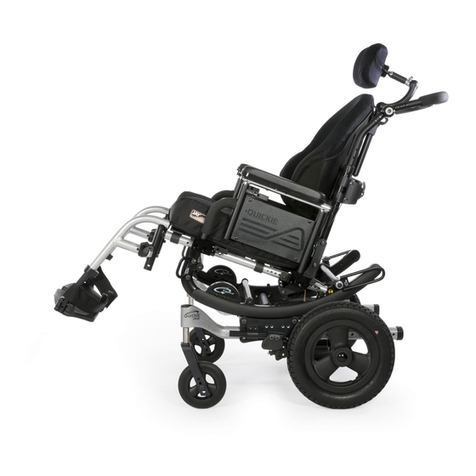930475 Rev. A
II. Table of Contents 5
IX. SET UP, ADJUSTMENT & USE ................................................................................ 27
Notes ................................................................................................................ 27
Tools You Will Need............................................................................................. 28
Chec Out .......................................................................................................... 28
A. Power Drive Unit ............................................................................................ 29
B. Battery Removal............................................................................................. 29
C. Folding Bac rest............................................................................................. 30
D. Footrests....................................................................................................... 30
E. Elevating Legrests (Optional) ........................................................................... 31
F. Integral Joystic Installation ........................................................................... 31
G. Remote Joystic Installation (Optional)............................................................. 31
H. To Adjust the Height of the Remote Joystic (Optional) ....................................... 31
I. Remote Joystic Swing-Away Retractable Mount (Optional) .................................. 32
J. Dual-Post Height-Adjustable Armrests................................................................ 32
K. Single Post Height-Adjustable Armrests (Optional) .............................................. 32
L. Seat Depth .................................................................................................... 33
M. 10" Drive Wheel ............................................................................................. 34
N. Dynamic Stabilizer .......................................................................................... 34
MANUAL WHEELCHAIR CONVERSION KIT .............................................................. 35
A. Joystic ........................................................................................................ 35
B. Power Drive Unit ............................................................................................ 35
C. Wheel Loc s .................................................................................................. 35
D. 24" Rear Wheels............................................................................................. 36
E. Anti-Tip Tubes ............................................................................................... 36
F. Installation of Axle Tube Assembly.................................................................... 36
G. Chec -Out ..................................................................................................... 37
X. OPERATING GUIDE.............................................................................................. 38
A. Performance Control Settings ........................................................................... 38
B. Quic ie QTRONIX Programmer Pad (Optional) ...................................................... 38
C. Thermal Roll-Bac ........................................................................................... 39
D. Circuit Brea ers.............................................................................................. 39
E. Integral Joystic ............................................................................................ 40
F. Remote Joystic Assembly (Optional) ................................................................ 41
G. Motor Loc s................................................................................................... 43
XI. BATTERIES ......................................................................................................... 44
A. Introduction .................................................................................................. 44
B. Battery Charger.............................................................................................. 45
C. Acid Burns..................................................................................................... 46
D. Connecting Batteries in Battery Compartment..................................................... 46
E. Charging Batteries.......................................................................................... 47
F. Disposing of Batteries..................................................................................... 48
XII. MAINTENANCE ................................................................................................... 49
A. Notes ........................................................................................................... 49
B. Cleaning ....................................................................................................... 49
C. Storage Tips .................................................................................................. 49
D. Battery Maintenance ....................................................................................... 50
E. Pneumatic Tires.............................................................................................. 51
F. To Repair or Replace a Tire .............................................................................. 51
G. Ordering Parts................................................................................................ 52
H. Maintenance Chart.......................................................................................... 52
XIII. WIRING DIAGRAM .............................................................................................. 53
XIV. SUNRISE LIMITED WARRANTY .............................................................................. 55
II. Table of Contents
930475 Rev. A
4
I. INTRODUCTION .................................................................................................. 3
II. TABLE OF CONTENTS ........................................................................................... 4
III. YOUR CHAIR AND ITS PARTS ............................................................................... 6
IV. NOTICE - READ BEFORE USE ................................................................................ 8
V. EMI (ELECTROMAGNETIC INTERFERENCE) .............................................................. 9
A. What is EMI................................................................................................... 9
B. What Effect Can EMI Have ............................................................................... 9
C. Sources of EMI ............................................................................................... 10
D. Distance From the Source ................................................................................ 10
E. Immunity Level .............................................................................................. 10
F. Report All Suspected EMI Incidents................................................................... 11
G. EMI From Chair .............................................................................................. 11
VI. GENERAL WARNINGS .......................................................................................... 12
A. Notice to Rider............................................................................................... 12
B. Notice to Attendants....................................................................................... 12
C. Weight Limit.................................................................................................. 13
D. Controller Settings.......................................................................................... 13
E. EMI .............................................................................................................. 13
F. Safety Chec list ............................................................................................. 13
G. Changes & Adjustments................................................................................... 14
H. When Seated in a Par ed Wheelchair ................................................................. 14
I. Environmental Conditions ................................................................................ 14
J. Terrain .......................................................................................................... 15
K. Street Use ..................................................................................................... 15
L. Motor Vehicle Safety ....................................................................................... 15
M. Center of Balance ........................................................................................... 16
N. Transfers ....................................................................................................... 16
O. Reaching or Leaning ....................................................................................... 17
P. Dressing or Changing Clothes ........................................................................... 17
Q. Obstacles ...................................................................................................... 18
R. Driving in Reverse .......................................................................................... 18
S. Ramps, Slopes & Sidehills ................................................................................ 18
T. To Reduce the Ris of Falls, Tip-over or Loss of Control........................................ 19
U. Ramps at Home & Wor ................................................................................... 20
V. Wheelchair Lifts ............................................................................................. 20
W. Curbs & Single Steps....................................................................................... 21
X. Stairs ........................................................................................................... 21
Y. Escalators...................................................................................................... 21
VII. WARNINGS: COMPONENTS & OPTIONS................................................................... 22
A. Anti-Tip Levers .............................................................................................. 22
B. Armrests ....................................................................................................... 22
C. Batteries....................................................................................................... 22
D. Cushion & Sling Seats ..................................................................................... 22
E. Fasteners ...................................................................................................... 23
F. Footrests....................................................................................................... 23
G. Motor Loc .................................................................................................... 23
H. On/Off Switch ................................................................................................ 23
I. Pneumatic Tires.............................................................................................. 24
J. Positioning Belts (Optional)............................................................................. 24
K. Push Handles................................................................................................. 24
L. Rear Wheel Loc s (Optional) ............................................................................ 25
M. Seating Systems ............................................................................................. 25
N. Upholstery Fabric ........................................................................................... 25
VIII. TIPS FOR ATTENDANTS ........................................................................................ 26
A. To Climb a Curb or Single Step ......................................................................... 26
B. To Descend a Curb or Single Step...................................................................... 26































